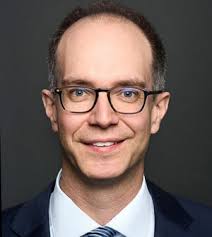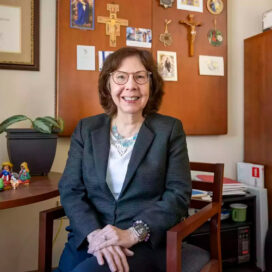Hoosier VC fund hunts for infant technologies
Published: June 12, 2007 / Author: Chuck Bowen
To get your idea from the drawing board, build up a company around it and take a product to market takes time and, more importantly, money — sometimes tens of millions of dollars.
Enter IN-vivo Ventures. The West Lafayette-based company launched a new multimilliondollar
venture capital fund in January to help build as many as 15 companies from the ground up by focusing on life-sciences companies that use technology developed at universities.
The new IN-vivo Ventures Founder’s Fund is part of a burgeoning venture capital bankroll in Indiana — and other Midwestern states — trying to lure brainpower, technology and their accompanying economic windfalls away from traditional life-sciences venture capital strongholds on the coasts.
“We as a state need to open our eyes. It’s definitely a major economic development engine,” said George Sweet, a real estate developer from Carmel, and one of the “angels” who chipped in for IN- vivo’s new fund.
“There’s a great deal of potential that Hoosiers continually want to beat down. The state has that potential. It’s a great place to do business,” Sweet said. “But you can’t (grow) staying at home never talking to anyone and never doing anything.”
Indiana is growing as a destination for investments, especially in the life-sciences sector. While exact figures on the amount of venture capital available statewide are not kept, industry experts estimate it at around $200 million. And $85 million of it came to Purdue’s Research Park — where IN-vivo is based — in fiscal year 2005, the latest year for which those figures are available.
Gary Gigot, who founded the Gigot Center for Entrepreneurial Studies at the University of Notre Dame, now works as a general partner at Seattle-based Frazier Technology Ventures. He said venture capital historically has been poured into such hotspots as Northern and Southern California, Seattle, Austin (Texas), Boston and New York City.
Under the typical scenario, a successful group of companies and venture capital firms develops around a region, which in turn builds up a concentration of executive talent. Add a strong university system — such as Stanford, the University of California or Harvard — and you have a venture capital juggernaut.
But many investors see Indiana written all over that model, too: The state has world-class universities such as Notre Dame, Purdue and Indiana University, and an estimated $200 million in venture capital available. A recent report by the Corporation for Enterprise Development also ranked Indiana as fourth among the states for its percentage gain in venture capital/angel investing from 1999 to 2004.
David Johnson, chief executive of BioCrossroads, said IN-vivo’s new fund will complement the state’s growing list of venture funds. He said it is unique because it provides both money at the earliest, most vital stages and a strong background in startup company management.
“No one else is doing that. That’s a very significant step,” Johnson said. The fund will help other entrepreneurs “get themselves ready to do what Chad’s doing right now with Quadraspec. Make (their company) all of a sudden a very formidable player in the market,” he said.
That Chad is Chad Barden, who co-founded IN-vivo in 2003, as well as one of its earliest VC success stories: Quadraspec, a company that has developed a faster way to test blood samples.
IN-vivo’s focus on “infant” technologies is important, Barden said, because other Midwestern VCs and even government-run funds have lately shifted their focus to laterstage companies that are closer to commercializing their products.
Barden is a Hoosier life-sciences entrepreneur, who graduated from high school here and moved west to California. In 2003, he sold a company he founded to return to Indiana with his wife to raise their family.
The next year, he and Eric Davis started IN-vivo Ventures, and then Barden started Quadraspec a year later after raising more than $9 million in capital.
But even with an influx of professional Hoosiers returning to the heartland, Indiana still has a long way to go. The $200 million available statewide would only be a fraction of the total holdings of just one West Coast venture capital firm, Barden said.
“It pales in comparison to Boston or the coasts,” he said. “We need to keep in perspective where we are. Our engine is still being turned over by the starter. It’s not running on its own yet.”
And even though the total market is comparatively smaller, every little bit helps, said BioCrossroads’ Johnson. More independent investors who get interested in Indiana means more deals.
“It makes the companies more attractive. It makes our market more attractive,” he said.
###
/news_and_events/news_articles/article/1188/hoosier-vc-fund-hunts-for-infant-technologies




